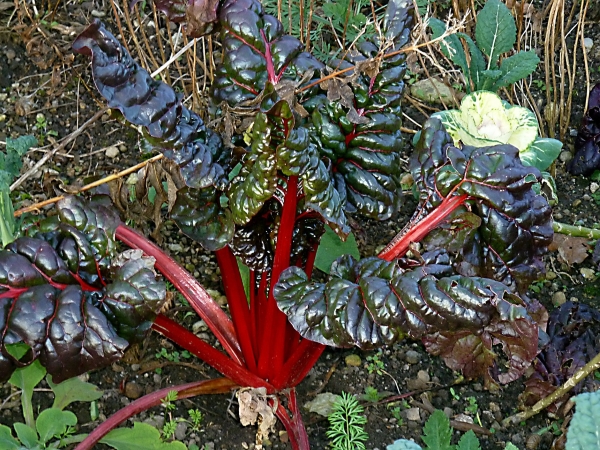
They first appeared in Europe approximately 400 years ago, and have become highly prized for their sweet and sour taste that complements a number of other sweet fruits for pies, cakes, and juices.
Rhubarb and health benefits
The stalks are rich in several B-complex vitamins such as folates, riboflavin, niacin, vitamin B-6 (pyridoxine), thiamin, and pantothenic acid. Red color stalks carry more vitamin-A than in the green varieties thereby is powerful natural antioxidant for good skin, vision, and possible protection against lung and mouth cancers. Furthermore rhubarb stalks rich in dietary fiber, protein, calcium, vitamin C and vitamin K which supports healthy bone growth and can limit neuronal damage in the brain. Good mineral sources include 32% of the daily value in manganese per serving, along with iron, potassium, and phosphorus.
Rhubarb and folk medicine
The root was popular in ancient Chinese medicine for soothing stomach ailments and relieving constipation.
Rhubarb and dietary
Rhubarb is one of the lowest caloric vegetables on the market, and as such, it is often recommended for people who are struggling to lose weight, but still want to remain healthy. 100 grams of rhubarb contains only 21 calories, moreover the various organic compounds in rhubarb have positive impact on the body’s metabolism can also dramatically increase the rate that the body burns fat. The high amount of dietary fiber support a healthy digestive system by bulking up stool and making sure that bowel movements are smooth and regular.
Rhubarb and presence
This cool-season plant is native to Siberia, and popular in many regions of Europe and North America. Rhubarb is one of easy plants to grow and can last for many years (10-15 years) once established. The stalks (petioles) which are being used for human consumption and can be ready for harvesting from second year onwards. Be careful that children or pets do not eat the rhubarb leaves if you grow the plant yourself as the green leaves have toxic effect. If the plant is subject to extreme cold, the dangerous acid can migrate into the stalk, so be sure to store rhubarb in a warm or temperate space, just like the climate it normally grows in.

Rhubarb and safety
Green tops of rhubarb contain oxalic acid as well as poisonous glycosides. If you are growing them in the backyard, immediately separate the petiole (stalks) from its leaf part (leaf blade) once you harvest. Oxalate can cause severe toxic symptoms even at much lower concentrations than this on the human body. Symptoms may include burning in the eyes, mouth, and throat; skin edema, difficulty breathing. In severe cases, it can result in kidney failure, convulsions, coma, and death. A good thing to remember is that rhubarb leaves are toxic!
(adsbygoogle = window.adsbygoogle || []).push({});
Rhubarb and foods
Its crispy, juicy stalks can be used in the preparations of sauces, preserve, jellies, jams, syrups, sorbet, juice. Rhubarb is best remembered for its delicious pies.It can also be used in the preparations of tarts, puddings, crumbs, pancakes, muffins, strudel.
Rhubarb and cosmetics
Rhubarb root extract contains rhaponticin, a molecule that activates a receptor that stimulates the growth of skin cells (differentiation of keratinocytes) and natural hydration mechanisms. Rhubarb appears also in hand made soaps and bath bombs as flavoring substance.

Become part of the CK community by uploading and sharing traditional or personal recipes. Once you've logged in you can upload, save and print your dishes online.